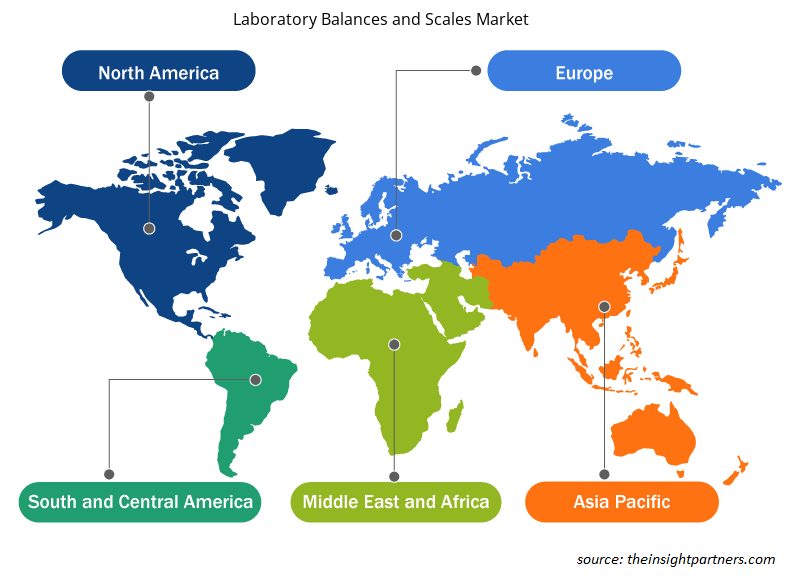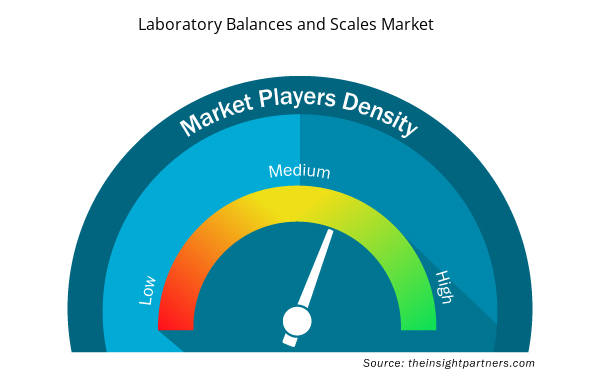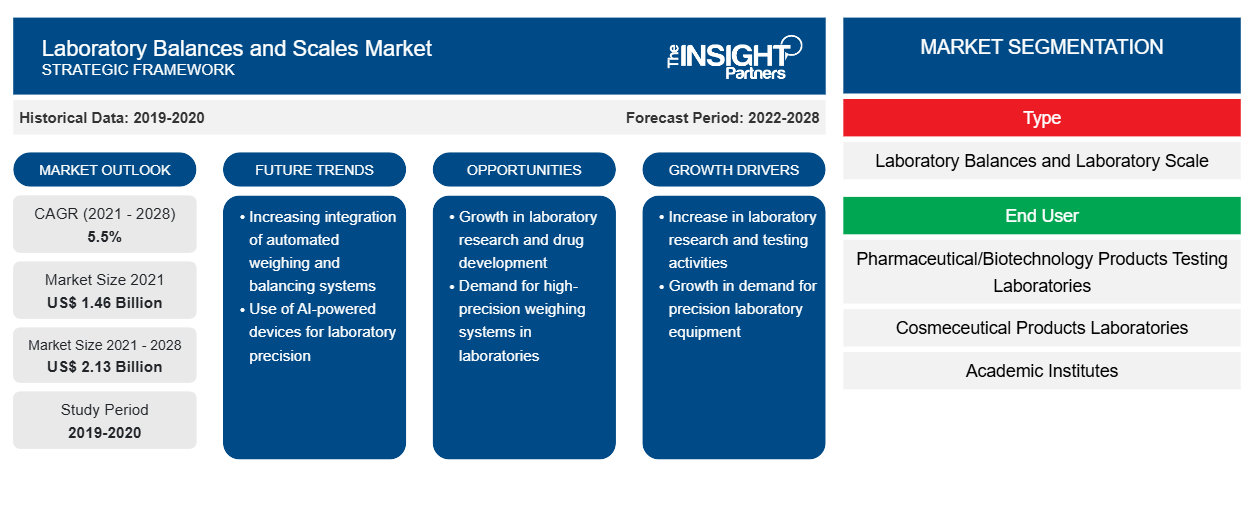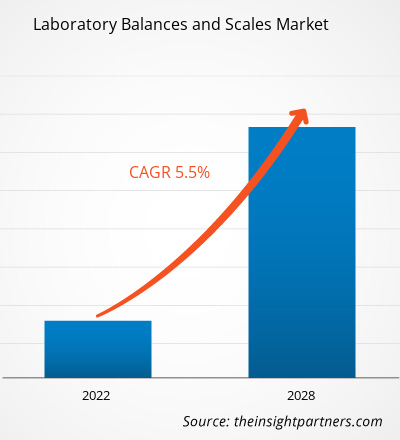Si prevede che il mercato delle bilance e delle scale da laboratorio raggiungerà i 2.131,14 milioni di dollari nel 2028, rispetto ai 1.463,53 milioni di dollari del 2021. Si stima che il mercato crescerà con un CAGR del 5,5% dal 2021 al 2028.CAGR of 5.5% from 2021-2028.
L'ambito del mercato delle bilance e delle scale da laboratorio include tipo, utente finale e regione. Il mercato delle bilance e delle scale da laboratorio, in base alla regione, è segmentato in Nord America, Europa, Asia Pacifico, Medio Oriente e Africa e Sud e Centro America. Il rapporto offre approfondimenti e analisi approfondite del mercato delle bilance e delle scale da laboratorio, sottolineando vari parametri come tendenze di mercato, progressi tecnologici, dinamiche di mercato e analisi del panorama competitivo dei principali attori del mercato in tutto il mondo. Include anche l'analisi dell'impatto del COVID-19 in tutte le regioni.
Personalizza questo report in base alle tue esigenze
Riceverai la personalizzazione gratuita di qualsiasi report, comprese parti di questo report, o analisi a livello nazionale, pacchetto dati Excel, oltre a usufruire di grandi offerte e sconti per start-up e università
- Scopri le principali tendenze di mercato in questo rapporto.Questo campione GRATUITO includerà analisi di dati che spaziano dalle tendenze di mercato alle stime e alle previsioni.
Approfondimenti di mercato
Aumento del numero di pipeline di ricerca delle aziende farmaceutiche e biotecnologiche e delle organizzazioni di ricerca a contratto
L'infrastruttura sanitaria sta assistendo a una crescita significativa del numero di sperimentazioni cliniche e pipeline di ricerca in tutto il mondo. La sperimentazione clinica è un passaggio cruciale e significativo per valutare la sicurezza e l'efficacia di una strategia medica, di un trattamento o di un dispositivo per uso commerciale. Questi studi aiutano anche a comprendere e determinare i migliori approcci medici per una particolare area terapeutica. Le sperimentazioni cliniche vengono condotte principalmente per raccogliere dati sulla sicurezza e l'efficacia di un nuovo farmaco e sviluppo di un dispositivo. Prima dell'approvazione delle molecole di farmaci o dei dispositivi medici da parte delle autorità di regolamentazione, vengono condotti una serie di studi clinici.
Numero di studi registrati per sperimentazioni cliniche
Anno di prima pubblicazione | Studi all'inizio dell'anno | Studi durante l'anno | Studi di fine anno |
2015 | 181.304 | 24.130 | 205.434 |
2016 | 205.434 | 27.809 | 233.243 |
2017 | 233.243 | 29.198 | 262.441 |
2018 | 262.441 | 17.836 | 280.277 |
2019 | 293.275 | 32.519 | 325.794 |
2020 | 325.794 | 36.740 | 362.534 |
Fonte: Clinical Trials.gov e analisi di The Insight Partners
Pertanto, il crescente numero di sperimentazioni cliniche accelera la domanda di strumenti e attrezzature di laboratorio, che in ultima analisi determinerà un impulso al mercato delle bilance da laboratorio durante il periodo di previsione.
Informazioni basate sul tipo
Il mercato delle bilance da laboratorio e delle bilance , per tipo, è segmentato in bilance da laboratorio e bilance da laboratorio. Il segmento delle bilance da laboratorio è ulteriormente sottosegmentato come bilance analitiche, bilance a caricamento dall'alto/di precisione, bilance micro e ultramicro, bilance per umidità, bilance portatili e altre bilance. Il segmento delle bilance da laboratorio è ulteriormente sottosegmentato come bilance da banco, bilance contapezzi, bilance compatte e altre bilance. Il segmento delle bilance da laboratorio ha detenuto la quota maggiore del mercato nel 2021, mentre si prevede che lo stesso segmento registrerà il CAGR più elevato del 5,8% nel mercato durante il periodo di previsione.
Bilance da laboratorio e analisi regionali del mercato
Le tendenze regionali e i fattori che influenzano il mercato delle bilance e delle scale da laboratorio durante il periodo di previsione sono stati ampiamente spiegati dagli analisti di Insight Partners. Questa sezione discute anche i segmenti e la geografia del mercato delle bilance e delle scale da laboratorio in Nord America, Europa, Asia Pacifico, Medio Oriente e Africa e America meridionale e centrale.

- Ottieni i dati specifici regionali per il mercato delle bilance e delle scale da laboratorio
Ambito del rapporto di mercato sulle bilance e sulle scale da laboratorio
| Attributo del report | Dettagli |
|---|---|
| Dimensioni del mercato nel 2021 | 1,46 miliardi di dollari USA |
| Dimensioni del mercato entro il 2028 | 2,13 miliardi di dollari USA |
| CAGR globale (2021 - 2028) | 5,5% |
| Dati storici | 2019-2020 |
| Periodo di previsione | 2022-2028 |
| Segmenti coperti | Per tipo
|
| Regioni e Paesi coperti | America del Nord
|
| Leader di mercato e profili aziendali chiave |
|
Densità degli attori del mercato delle bilance e delle bilance da laboratorio: comprendere il suo impatto sulle dinamiche aziendali
Il mercato delle bilance da laboratorio e delle bilance sta crescendo rapidamente, spinto dalla crescente domanda degli utenti finali dovuta a fattori quali l'evoluzione delle preferenze dei consumatori, i progressi tecnologici e una maggiore consapevolezza dei vantaggi del prodotto. Con l'aumento della domanda, le aziende stanno ampliando le loro offerte, innovando per soddisfare le esigenze dei consumatori e capitalizzando sulle tendenze emergenti, il che alimenta ulteriormente la crescita del mercato.
La densità degli operatori di mercato si riferisce alla distribuzione di aziende o società che operano in un particolare mercato o settore. Indica quanti concorrenti (operatori di mercato) sono presenti in un dato spazio di mercato in relazione alle sue dimensioni o al valore di mercato totale.
Le principali aziende che operano nel mercato delle bilance da laboratorio sono:
- METTLER TOLEDO
- Sartorius AG
- Strumenti PCE
- OHAUS
- Attrezzature Adam Ltd
Disclaimer : le aziende elencate sopra non sono classificate secondo un ordine particolare.

- Ottieni una panoramica dei principali attori del mercato delle bilance da laboratorio e delle bilance da banco
Informazioni basate sull'utente finale
Sulla base delle indicazioni, le bilance da laboratorio e le bilance commercializzano laboratori di analisi di prodotti farmaceutici e biotecnologici, laboratori di prodotti cosmeceutici, istituti accademici e laboratori di ricerca. I laboratori di analisi di prodotti farmaceutici e biotecnologici hanno detenuto la quota maggiore del mercato nel 2020 e si stima che lo stesso segmento registrerà il CAGR più elevato del 6,7% nel mercato durante il periodo di previsione.
Le strategie inorganiche come partnership, fusioni e acquisizioni sono comunemente adottate dalle aziende per soddisfare la domanda mutevole dei clienti e mantenere il loro marchio in tutto il mondo. Gli operatori di mercato che operano nel mercato delle bilance da laboratorio e delle bilance adottano anche strategie organiche come il lancio e l'espansione del prodotto per estendere la loro presenza e il portafoglio prodotti in tutto il mondo, nonché per soddisfare la domanda crescente.
Per tipo
- Bilance da laboratorio
- Bilance analitiche
- Bilance a caricamento dall'alto/di precisione
- Micro e Ultra-Micro Bilance
- Bilanci di umidità
- Bilance portatili
- Altri saldi
- Bilance da laboratorio
- Bilance da banco
- Bilance per il conteggio
- Bilance compatte
- Altre scale
Da parte dell'utente finale
- Laboratori di analisi di prodotti farmaceutici e biotecnologici
- Laboratori di prodotti cosmeceutici
- Istituti accademici
- Laboratori di ricerca
Per Geografia
- America del Nord
- NOI
- Canada
- Messico
- Europa
- Francia
- Germania
- Italia
- Regno Unito
- Spagna
- Resto d'Europa
- Asia Pacifico (APAC)
- Cina
- India
- Corea del Sud
- Giappone
- Australia
- Resto dell'APAC
- Medio Oriente e Africa (MEA)
- Sudafrica
- Arabia Saudita
- Emirati Arabi Uniti
- Resto del MEA
- America del Sud e Centro (SCAM)
- Brasile
- Argentina
- Resto della TRUFFA
Profili aziendali
- METTLER TOLEDO
- Sartorius AG
- Strumenti PCE
- OHAUS
- Attrezzature Adam Ltd
- PRECISIONE AL GRAMMO
- Bilance e pesatrici RADWAG
- Società per azioni
- BONSO Electronics International Inc.
- Società A&D, limitata
- Analisi storica (2 anni), anno base, previsione (7 anni) con CAGR
- Analisi PEST e SWOT
- Valore/volume delle dimensioni del mercato - Globale, regionale, nazionale
- Industria e panorama competitivo
- Set di dati Excel


- Joint Pain Injection Market
- Volumetric Video Market
- Europe Industrial Chillers Market
- Artificial Intelligence in Defense Market
- Ceiling Fans Market
- Truck Refrigeration Market
- Diaper Packaging Machine Market
- Medical Devices Market
- Trade Promotion Management Software Market
- Bioremediation Technology and Services Market

Report Coverage
Revenue forecast, Company Analysis, Industry landscape, Growth factors, and Trends

Segment Covered
This text is related
to segments covered.

Regional Scope
North America, Europe, Asia Pacific, Middle East & Africa, South & Central America

Country Scope
This text is related
to country scope.
Domande frequenti
The costs of the Laboratory Balances and Scales are much higher, and they may cost US$ 300–1500, or more, per type. The cost may also differ from product to product types.
Driving factors include rapid growth of pharmaceutical and biotechnology industry and increasing number of research pipeline of pharma-biotech companies and contract research organizations. However, the limited replacement rate among end users is likely to hamper the growth of the market to a certain extent.
Micro catheter is small-diameter catheter, preferably used during minimally invasive surgeries. . Laboratory balances are specifically used to measure mass of the substance, while laboratory scales are utilized to measure weight of the substances. These scales and balances are classified on the basis of weighing capacity. Weighing of materials play a vital role in research and development as well as production monitoring and quality control.
Trends and growth analysis reports related to Life Sciences : READ MORE..
The List of Companies - Laboratory Balances and Scales Market
- METTLER TOLEDO
- Sartorius AG
- PCE Instruments
- OHAUS
- Adam Equipment Ltd
- GRAM PRECISION
- RADWAG Balances and Scales
- Scientech Inc.
- BONSO Electronics International Inc.
- A&D Company, Limited
The Insight Partners performs research in 4 major stages: Data Collection & Secondary Research, Primary Research, Data Analysis and Data Triangulation & Final Review.
- Data Collection and Secondary Research:
As a market research and consulting firm operating from a decade, we have published and advised several client across the globe. First step for any study will start with an assessment of currently available data and insights from existing reports. Further, historical and current market information is collected from Investor Presentations, Annual Reports, SEC Filings, etc., and other information related to company’s performance and market positioning are gathered from Paid Databases (Factiva, Hoovers, and Reuters) and various other publications available in public domain.
Several associations trade associates, technical forums, institutes, societies and organization are accessed to gain technical as well as market related insights through their publications such as research papers, blogs and press releases related to the studies are referred to get cues about the market. Further, white papers, journals, magazines, and other news articles published in last 3 years are scrutinized and analyzed to understand the current market trends.
- Primary Research:
The primarily interview analysis comprise of data obtained from industry participants interview and answers to survey questions gathered by in-house primary team.
For primary research, interviews are conducted with industry experts/CEOs/Marketing Managers/VPs/Subject Matter Experts from both demand and supply side to get a 360-degree view of the market. The primary team conducts several interviews based on the complexity of the markets to understand the various market trends and dynamics which makes research more credible and precise.
A typical research interview fulfils the following functions:
- Provides first-hand information on the market size, market trends, growth trends, competitive landscape, and outlook
- Validates and strengthens in-house secondary research findings
- Develops the analysis team’s expertise and market understanding
Primary research involves email interactions and telephone interviews for each market, category, segment, and sub-segment across geographies. The participants who typically take part in such a process include, but are not limited to:
- Industry participants: VPs, business development managers, market intelligence managers and national sales managers
- Outside experts: Valuation experts, research analysts and key opinion leaders specializing in the electronics and semiconductor industry.
Below is the breakup of our primary respondents by company, designation, and region:

Once we receive the confirmation from primary research sources or primary respondents, we finalize the base year market estimation and forecast the data as per the macroeconomic and microeconomic factors assessed during data collection.
- Data Analysis:
Once data is validated through both secondary as well as primary respondents, we finalize the market estimations by hypothesis formulation and factor analysis at regional and country level.
- Macro-Economic Factor Analysis:
We analyse macroeconomic indicators such the gross domestic product (GDP), increase in the demand for goods and services across industries, technological advancement, regional economic growth, governmental policies, the influence of COVID-19, PEST analysis, and other aspects. This analysis aids in setting benchmarks for various nations/regions and approximating market splits. Additionally, the general trend of the aforementioned components aid in determining the market's development possibilities.
- Country Level Data:
Various factors that are especially aligned to the country are taken into account to determine the market size for a certain area and country, including the presence of vendors, such as headquarters and offices, the country's GDP, demand patterns, and industry growth. To comprehend the market dynamics for the nation, a number of growth variables, inhibitors, application areas, and current market trends are researched. The aforementioned elements aid in determining the country's overall market's growth potential.
- Company Profile:
The “Table of Contents” is formulated by listing and analyzing more than 25 - 30 companies operating in the market ecosystem across geographies. However, we profile only 10 companies as a standard practice in our syndicate reports. These 10 companies comprise leading, emerging, and regional players. Nonetheless, our analysis is not restricted to the 10 listed companies, we also analyze other companies present in the market to develop a holistic view and understand the prevailing trends. The “Company Profiles” section in the report covers key facts, business description, products & services, financial information, SWOT analysis, and key developments. The financial information presented is extracted from the annual reports and official documents of the publicly listed companies. Upon collecting the information for the sections of respective companies, we verify them via various primary sources and then compile the data in respective company profiles. The company level information helps us in deriving the base number as well as in forecasting the market size.
- Developing Base Number:
Aggregation of sales statistics (2020-2022) and macro-economic factor, and other secondary and primary research insights are utilized to arrive at base number and related market shares for 2022. The data gaps are identified in this step and relevant market data is analyzed, collected from paid primary interviews or databases. On finalizing the base year market size, forecasts are developed on the basis of macro-economic, industry and market growth factors and company level analysis.
- Data Triangulation and Final Review:
The market findings and base year market size calculations are validated from supply as well as demand side. Demand side validations are based on macro-economic factor analysis and benchmarks for respective regions and countries. In case of supply side validations, revenues of major companies are estimated (in case not available) based on industry benchmark, approximate number of employees, product portfolio, and primary interviews revenues are gathered. Further revenue from target product/service segment is assessed to avoid overshooting of market statistics. In case of heavy deviations between supply and demand side values, all thes steps are repeated to achieve synchronization.
We follow an iterative model, wherein we share our research findings with Subject Matter Experts (SME’s) and Key Opinion Leaders (KOLs) until consensus view of the market is not formulated – this model negates any drastic deviation in the opinions of experts. Only validated and universally acceptable research findings are quoted in our reports.
We have important check points that we use to validate our research findings – which we call – data triangulation, where we validate the information, we generate from secondary sources with primary interviews and then we re-validate with our internal data bases and Subject matter experts. This comprehensive model enables us to deliver high quality, reliable data in shortest possible time.


 Ottieni un campione gratuito per questo repot
Ottieni un campione gratuito per questo repot